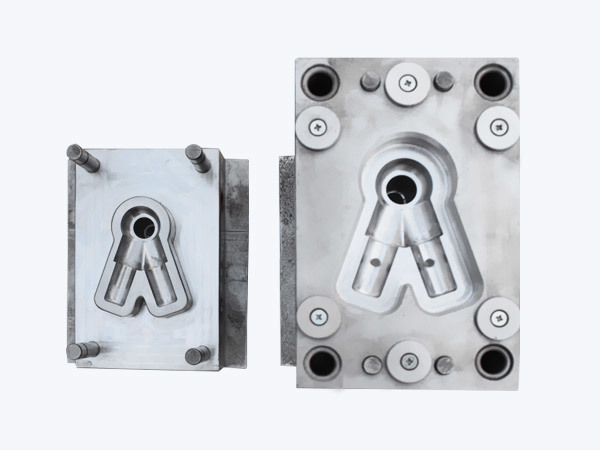Fast delivery
Global supplier
Innovative solutions
The Essential Guide to Understanding Plastic Injection Molds: A Comprehensive Overview
Jul 05,2025
The Essential Guide to Understanding Plastic Injection Molds
Table of Contents
- 1. Introduction to Plastic Injection Molding
- 2. What is Plastic Injection Molding?
- 3. Key Components of Injection Molds
- 4. Designing Effective Injection Molds
- 5. The Manufacturing Process of Injection Molds
- 6. Ensuring Quality in Injection Molding
- 7. Common Issues and Troubleshooting
- 8. Future Trends in Injection Molding Technology
- 9. Frequently Asked Questions
- 10. Conclusion
1. Introduction to Plastic Injection Molding
Plastic injection molding is a manufacturing process that produces parts by injecting molten material into a mold. This method is widely used in the manufacturing sector due to its efficiency and ability to create complex shapes with high precision. Understanding the intricacies of plastic injection molds is crucial for engineers, designers, and manufacturers alike.
2. What is Plastic Injection Molding?
Plastic injection molding involves several stages, beginning with the creation of a mold designed to shape the molten plastic into a final product. The process is versatile, suitable for manufacturing a wide array of items, from small components to large industrial parts. By utilizing thermoplastics or thermosetting plastics, manufacturers can achieve a range of properties tailored to specific applications.
2.1 The Injection Molding Process Explained
The injection molding process generally involves the following steps:
1. **Melt the Plastic:** Raw plastic pellets are heated until they become molten.
2. **Inject into Mold:** The molten plastic is injected into the mold cavity under high pressure.
3. **Cooling:** Once the mold is filled, the plastic cools and solidifies.
4. **Ejection:** The mold opens, and the finished part is ejected.
This method allows for a high degree of repeatability, making it ideal for mass production.
3. Key Components of Injection Molds
Understanding the components of an injection mold is essential for optimizing the manufacturing process. Key parts include:
3.1 Mold Base
The mold base provides the structure for the entire mold. It is responsible for holding the components together and ensuring stability during the injection process.
3.2 Cavity and Core
The cavity and core are the areas that form the shape of the final product. The cavity holds the material, while the core forms the interior of the mold.
3.3 Ejector System
This system is responsible for removing the finished part from the mold after cooling. It typically includes ejector pins that push the part out.
3.4 Cooling Channels
Cooling channels are integrated into the mold to help regulate the temperature during the injection process, ensuring the material cools uniformly.
3.5 Gate and Runner Systems
These components control the flow of molten plastic into the mold cavity. A well-designed runner system minimizes waste and ensures consistent filling.
4. Designing Effective Injection Molds
Designing an effective injection mold is a pivotal aspect that influences production efficiency, cost, and product quality. Here are some essential design considerations:
4.1 Design for Manufacturability (DFM)
Incorporating DFM principles ensures that the mold is easy to manufacture and assemble, reducing production time and costs.
4.2 Material Selection
Choosing the right material for the mold is critical. Factors to consider include thermal conductivity, hardness, and resistance to wear.
4.3 Tolerances and Specifications
Precise tolerances must be established to ensure the final product meets industry standards. This requires thorough testing and validation.
4.4 Surface Finish
The surface finish of the mold affects the aesthetic and functional attributes of the product. A smooth finish can reduce friction and improve the part's overall quality.
5. The Manufacturing Process of Injection Molds
The manufacturing process for injection molds is multifaceted and includes various stages.
5.1 CNC Machining
Computer Numerical Control (CNC) machining is often employed to create the mold's intricate parts. This technology ensures precision and consistency.
5.2 EDM (Electrical Discharge Machining)
EDM is used for creating complex features that are difficult to achieve with traditional machining. It allows for fine details in the mold design.
5.3 Assembly and Testing
After machining, the mold parts are assembled and rigorously tested to ensure functionality. This step is vital to confirm that the mold meets design specifications.
6. Ensuring Quality in Injection Molding
Quality assurance is a crucial aspect of the injection molding process. Implementing strict quality control measures can help prevent defects.
6.1 Process Monitoring
Real-time monitoring of the injection molding process helps identify issues as they arise, allowing for immediate corrective actions.
6.2 Regular Maintenance
Routine maintenance of molds and machinery ensures optimal performance and longevity, reducing unexpected downtimes.
6.3 Testing Methods
Various testing methods, including dimensional checks and functional tests, should be employed to guarantee the quality of molded parts.
7. Common Issues and Troubleshooting
Despite best efforts, manufacturers may encounter challenges during the injection molding process. Understanding common issues can aid in quick resolution.
7.1 Short Shots
Short shots occur when the mold does not fill completely, often due to inadequate material flow. To mitigate this, assess the injection pressure and material temperature.
7.2 Flashing
Flashing happens when excess material seeps out of the mold. Solutions include adjusting the clamping force and checking mold alignment.
7.3 Warping and Shrinkage
These issues can affect the dimensional accuracy of the final product. Proper cooling and material selection can minimize such risks.
8. Future Trends in Injection Molding Technology
As technology evolves, so does the field of injection molding. Emerging trends include:
8.1 Smart Manufacturing
The integration of IoT technology in injection molding allows for smarter operations and improved efficiency.
8.2 Sustainable Practices
With increased focus on sustainability, many manufacturers are exploring biodegradable materials and energy-efficient processes.
8.3 Advanced Simulation Techniques
Utilizing advanced simulation software enables manufacturers to predict mold behavior, reducing trial-and-error in the design phase.
9. Frequently Asked Questions
9.1 What types of materials can be used in injection molding?
Various thermoplastics and thermosetting plastics can be used, including ABS, polycarbonate, and nylon.
9.2 How long does the injection molding process take?
The time varies based on part complexity and production volume but typically ranges from seconds to minutes per cycle.
9.3 What are the advantages of injection molding?
Advantages include high efficiency, minimal waste, and the ability to produce complex shapes with precision.
9.4 Can injection molds be reused?
Yes, high-quality injection molds can be reused multiple times, making them a cost-effective option for mass production.
9.5 How do I choose a good injection mold supplier?
Consider factors like experience, quality certifications, and customer reviews when selecting a supplier.
10. Conclusion
Understanding plastic injection molds is essential for anyone involved in manufacturing. From the intricacies of mold design to the complexities of the injection process, gaining comprehensive knowledge empowers professionals to optimize production, enhance product quality, and stay ahead in a competitive marketplace. As technology continues to advance, staying informed about the latest trends will enable you to leverage new opportunities in the field of plastic injection molding.
PREVIOUS:
Contact Us
Tel:
+86017717930013 +86013621742959
Email:
Address:
No.99 Denggao Road, Motou Town, Rugao City, Jiangsu Province, China.








